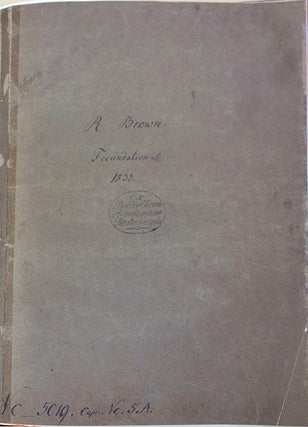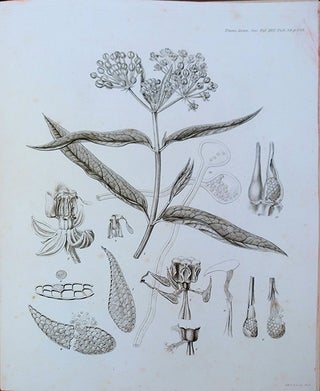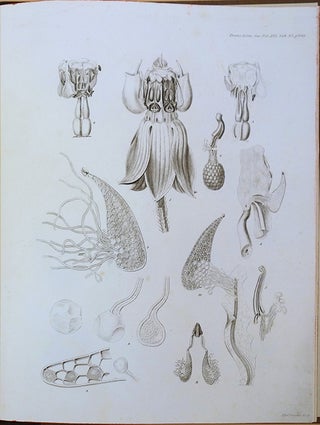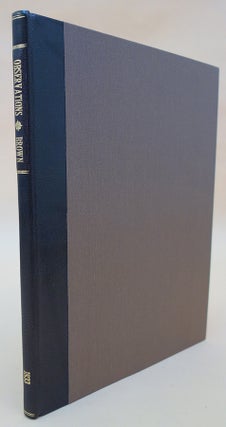Observations on the organs and mode of fecundation in orchideae and asclepiadeae
Publisher Information: London: Richard Taylor, 1833.
Brown, Robert (1773-1858). Observations on the organs and mode of fecundation in Orchideæ and Asclepiadeæ. Offprint from Transactions of the Linnean Society. [2], 685-745pp. 3 engraved plates. London: Richard Taylor, 1833. 282 x 221 mm. Modern quarter morocco, cloth boards, original front wrapper (repaired) bound in. Minor staining and foxing on the plates, inner margins of plates and first three leaves repaired, but very good. Presentation Copy, inscribed, probably by the recipient, on the verso of the front wrapper: “dedit auctor illustrissimus, amicissimus, d. 15 Septbris. 1835 Dr. Shaeper[?]” [the most illustrious and dear author gave (this) on 15th September 1835]. Stamps of the Rostock University Library on the front wrapper, title and a few other leaves.
First Edition, Offprint Issue. Discovery of the cell nucleus. Brown originally published his discovery in a pamphlet printed for private distribution, titled “Observations on the Organs and Mode of Fecundation in Orchideae and Asclepiadeae” (1831); the pamphlet, issued in a small edition, is now nearly impossible to obtain. The expanded journal edition of the paper, of which this is the offprint, includes Brown’s “Additional observations on the mode of fecundation in Orchideae,” which he read before the Linnean Society in June 1832.
In his paper Brown described a singular structure he had observed in the cells of orchideae,
"a single circular areola, generally somewhat more opake than the membrane of the cell . . . only one areola belongs to each cell . . . This areola, or nucleus of the cell as perhaps it might be termed, is not confined to the epidermis, being also found not only in the pubescence of the surface particularly when jointed, as in Cypripedium, but in many cases in the parenchyma or internal cells of the tissue . . . The nucleus of the cell is not confined to the Orchideae but is equally manifest in many other Monocotyledonous families; and I have even found it, hitherto however in very few cases, in the epidermis of Dicotyledonous plants "(pp. 710-12).
“A few earlier botanists evidently had observed the presence of this nucleus in some cells, as Brown himself points out, but he was the first specially to demonstrate its general occurrence in living cells and to give it the name ‘nucleus’” (Dictionary of Scientific Biography).
Book Id: 44488Price: $6,500.00





